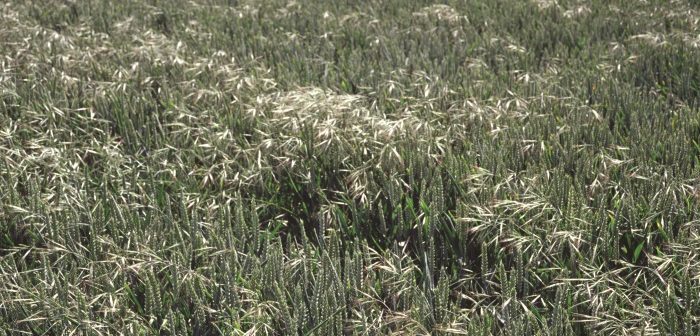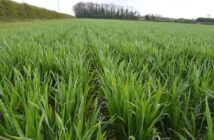Be wary of site and season effects when treating brome in winter wheat this spring to make sure herbicides pack their full punch advises Bayer.
Neil Thomson of Bayer oversees weed control trials in Scotland and North Northumberland and has seen first-hand that spray timing is all about the situation on the ground and not calendar date.
“Last year we had a trial looking at Brome control in wheat in Northumberland, contrary to expectations the most effective post-emergence spray was Pacifica (mesosulfuron + iodosulfuron) applied in the third week of April,” he explains. “It really out-performed the mid-March timing which we would expect to be better because the target is at an earlier growth stage.”
Mr Thomson puts this down to the weather conditions causing there to be little active growth in March so the active ingredient wasn’t taken in by the brome. In fact, weather conditions in March itself were quite close to the average according to Met Office statistics but substantial rainfall in January meant that land was waterlogged and wet. The sodden ground was slow to warm up so soil temperatures stayed low limiting active growth.
“The factors are very site specific, at the trial site last year there was a flood in January so the ground was very wet, on freer-draining land or places that missed the worst of the rain, earlier applications would’ve given much better results.”
According to Mr Thomson the most important thing is to check for active growth on a field-by-field basis – don’t make any assumptions. “Sterile brome goes purple during dormancy and greens up as active growth starts so with some careful field walking you should get a good idea of when to go with Pacifica.”
This season, Mr Thomson is managing a brome control trial near Edinburgh which is developing quite differently to last year. “The brome hasn’t really stopped growing because there has been no sustained cold spell – one night of frost is followed by a few mild days. Soils are drier than usual which has kept soil temps relatively high at around 4°C-5°C ,” he explains. “If things continue like this then active growth should start in March so arable farmers need to be ready with Pacifica as soon as the opportunity arises.”
David Cairns, Agrichemical Manager for McCreath Simpson & Prentice (Trading division of Simpsons Malt Ltd) also reports wheat crops in healthy condition. “We had a fantastic autumn for establishment – I don’t think we have seen such good establishment for a long time. Because we are not chasing black-grass like people further south we can drill early from the start of September. Crops that went in at the start of September are already at the 2–3 tiller stage whereas those that got drilled towards the start of October have 3–4 leaves.”
On brome land the programme for control was full rate (0.6 L/ha) Liberator after drilling followed by a post-em spray. Conditions were good enough in autumn for the follow up treatment, Mr Cairns estimates that around 20% of brome affected land has already been treated with either Atlantis (mesosulfuron + iodosulfuron) or Hamlet (mesosulfuron + iodosulfuron + diflufenican) with good results which you would expect at an autumn timing.
The remainder of the land will need to be tidied up this spring with different products being used depending on the situation. “Where broad-leaved weeds are a problem, I opt for Broadway Star whereas Pacifica is better against grasses – especially into April when Pacifica has a bit more power to control larger grass weeds,” he concludes.




